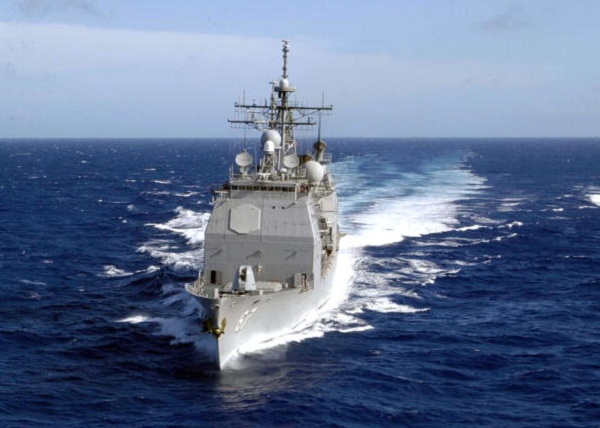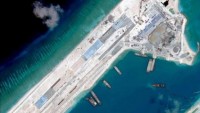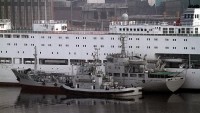US Pacific Fleet Gets Smaller, Even as China's Military Grows
| Christian George Acevedo | | Jan 06, 2016 07:47 AM EST |
(Photo : US Navy via Getty Images/Patrick Bonafede) The US Navy's guided missile cruiser USS Shiloh is seen here patrolling the waters of the Western Pacific. US naval commanders are currently rewriting the US Navy's strategy on naval bases in the Asia-Pacific to counter China's presence in the region.
China is flexing its muscles in Asia Pacific eventually to gain military supremacy in the region, but the U.S. Pacific Fleet is steadily shrinking.
However, U.S. Navy officials guarantee that the declining numbers of military personnel are compensated by the use of more advanced ships and lengthened deployments in the area. These also come with postponed maintenance to keep the presence of fewer ships.
Like Us on Facebook
According to Peter Jennings, an expert at the Australian Strategic Policy Institute think tank, it is important to maintain an impregnable military presence even during peacetime. The shrinking US military force in Asia Pacific is "emerging as a serious long-term problem," Jennings noted.
There are currently 182 US vessels, that include combat ships, aircraft carriers, auxiliary and logistics vessels, Cmdr. Clay Doss of U.S. Pacific Fleet said. Around 20 years ago, there were 192 fleets stationed in the area.
China's People's Liberation Army Navy, meanwhile, has deployed 300 surface ships, submarines, amphibious ships and patrol craft, based on Pentagon's Asia-Pacific Maritime Security Strategy report in August last year.
This comes amidst the rising tension in the Southeast Asian region since China became more insistent on its claims to disputed islands in South China Sea.
China considers the U.S. military presence in Asia as an attempt to limit the country's powers. Beijing, meanwhile, claims that it is just reclaiming its rightful and historical role as the leading cultural and political power in the region.
China has been building roughly 3,000 acres of artificial islands in a part of South China Sea that also claimed by Vietnam and the Philippines, fueling tensions in the area. Several international protests launched did not deter China from pouring sands on the ocean floor and building facilities on the new islands and reefs.
Questions now arise as to whether the U.S. Pacific Fleet would be able to sufficiently address issues in case regional anxieties heighten. Admiral Scott Swift, nevertheless, is confident that he has adequate resources.
"I'm very comfortable with the resources I have," he said.
TagsUS pacific fleet, People's Liberation Army Navy, Chin Artificial Islands South China Sea
©2015 Chinatopix All rights reserved. Do not reproduce without permission
EDITOR'S PICKS
-

Did the Trump administration just announce plans for a trade war with ‘hostile’ China and Russia?
-

US Senate passes Taiwan travel bill slammed by China
-

As Yan Sihong’s family grieves, here are other Chinese students who went missing abroad. Some have never been found
-

Beijing blasts Western critics who ‘smear China’ with the term sharp power
-

China Envoy Seeks to Defuse Tensions With U.S. as a Trade War Brews
-

Singapore's Deputy PM Provides Bitcoin Vote of Confidence Amid China's Blanket Bans
-

China warns investors over risks in overseas virtual currency trading
-

Chinese government most trustworthy: survey
-

Kashima Antlers On Course For Back-To-Back Titles
MOST POPULAR
LATEST NEWS
Zhou Yongkang: China's Former Security Chief Sentenced to Life in Prison

China's former Chief of the Ministry of Public Security, Zhou Yongkang, has been given a life sentence after he was found guilty of abusing his office, bribery and deliberately ... Full Article
TRENDING STORY

China Pork Prices Expected to Stabilize As The Supplies Recover

Elephone P9000 Smartphone is now on Sale on Amazon India

There's a Big Chance Cliffhangers Won't Still Be Resolved When Grey's Anatomy Season 13 Returns

Supreme Court Ruled on Samsung vs Apple Dispute for Patent Infringement

Microsoft Surface Pro 5 Rumors and Release Date: What is the Latest?













